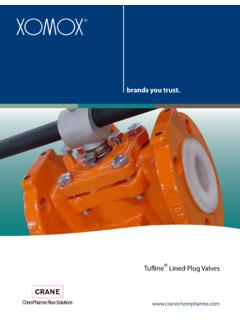Transcription of A practical guide to building airtight ... - Zero Carbon Hub
1 A practical guideto building airtight dwellingsA practical guideto building airtight dwellingsJune 2009 NHBC FoundationNF16 Published by IHS BRE Press on behalf of the NHBC FoundationJune 2009 ISBN 978-1-84806-095-1 NHBC FoundationBuildmark HouseChiltern AvenueAmershamBucks HP6 5 APTel: 01494 735394 Fax: 01494 735365 Email: guide was written by:Michael Jaggsand Chris Scivyer, would like to thank:SCIfor supplying steel frame construction details and for permission to use Figure 19 Energy Saving Trustfor permission to use Figures 7, 8, 11 and 18 Miller Homesfor permission to use Figures 9, 12, 15 (a and b) and 17 The Zero Carbon Hubfor the cartoonsPeter White, BREfor the section images on pages 12 and 28 Forticretefor the section image on page homes of previous generations, common features were open chimneys andfloorboards with gaps in-between and no attention was paid to airtightness at all.
2 Inmore recent times the trend has been away from these and we have realised just howmuch energy can be wasted through unwanted air leakage. Changes to building Regulations have now made airtightness an issue which cannot beignored and as we get ever-closer to the zero Carbon homes of the future, excellentstandards will have to be achieved in all new from airtightness testing across the industry is encouraging and demonstratesthat considerable improvement has already been made. Key among the lessons alreadylearned by many builders is that airtightness has to be given close attention from theearly stages of the design and throughout the construction phase. It is not somethingthat can be sorted out easily when the nearly-completed home fails an air pressure guide , which has been jointly produced by the NHBC Foundation and the ZeroCarbon Hub, brings together the experiences of those who have already got to gripswith airtightness for the benefit of designers and builders who have not.
3 It identifies thecommon air leakage paths in typical constructions and provides practical advice on howthese can be addressed. It stresses the importance of designing in an air barrier andensuring that its integrity is maintained throughout the construction hope you will find the guide a useful part of the toolkit for addressing this importantfeature of homes you are designing and building today, and in the low and zero JeffersonCEO, Zero Carbon HubFOREWORDABOUT THE NHBC FOUNDATIONAND THE ZERO Carbon HUBThe NHBC Foundation was established in 2006 by the NHBC in partnership with the BRE trust . Its purpose is to deliver high-quality research and practical guidance to helpthe industry meet its considerable challenges. Since its inception, the NHBC Foundation s work has focused primarily on thesustainability agenda and the challenges of the government s 2016 zero Carbon homestarget.
4 Research has included a review of microgeneration and renewable energytechniques and the groundbreaking research on zero Carbon and what it means tohomeowners and NHBC Foundation is also involved in a programme of positive engagement withgovernment, development agencies, academics and other key stakeholders, focusing oncurrent and pressing issues relevant to the details on the latest output from the NHBC Foundation can be found Foundation Advisory BoardThe work of the NHBC Foundation is guided by the NHBC Foundation Advisory Board,which comprises:Rt. Hon. Nick Raynsford MP, ChairmanTrevor Beattie, Corporate Director for Strategy, Policy, Performance and Research at theHomes and Communities AgencyDr Peter Bonfield, Chief Executive of BREP rofessor John Burland CBE, BRE TrustImtiaz Farookhi, Chief Executive of NHBCNeil Jefferson, Chief Executive of the Zero Carbon HubRod MacEachrane, NHBC Director (retired)Geoff Pearce, Group Director of Development and Asset Management at East Thames GroupDavid Pretty CBE, Chairman of the New Homes Marketing BoardRichard Simmons, Chief Executive of CABEP rofessor Steve Wilcox, Centre for Housing Policy, University of YorkThe Zero Carbon HubEstablished in 2008, the Zero Carbon Hub supports and reports to the 2016 Taskforcewhich is chaired by the Housing Minister and the Executive Chairman of the HomeBuilders Federation.
5 It is a public/private partnership established to take day-to-dayoperational responsibility for co-ordinating delivery of low and zero Carbon new purpose will be fulfilled by monitoring, co-ordinating and guiding the zero carbonprogramme and engaging organisations active in low and zero Carbon homes. To do thisthe Zero Carbon Hub is developing five integrated workstreams energy efficiency,energy supply, examples and scale up, skills and training and consumer engagement. For more information visit practical guide to building airtight dwellingsForewordiiiAbout the NHBC Foundation and the Zero Carbon Hubiv1 Understanding why it is build airtight dwellings? the causes of infiltration and exfiltration 22 Common air leakage of air leakage paths 53 for occupant ventilation94 building Regulations compliance route from dwellings105 Achieving an airtight dwelling and Key tips to achieve an airtight Airtightness testing of requirements to satisfy the building site the dwelling fails its airtightness target278 Conclusions28 References29 Further reading29 ContentsvCONTENTSviA practical guide to building airtight dwellingsUnderstanding airtightness1 This guide is intended for housebuilders and designers.
6 It offers practical advice on how toachieve a reasonable level of airtightness in why it is importantAchieving a reasonable level of airtightness is important for the energy efficiency ofdwellings and the comfort of occupants. The benefits of improved insulation levels andmore energy efficient heating systems are lost if warm air can leak out of a building andcold air can leak in. A mandatory requirement for airtightness has been set by the BuildingRegulations (for England and Wales, and Northern Ireland)1to ensure that reasonablestandards are being achieved, and it is compulsory to subject samples of newly builtdwellings to a pressure test in order to measure and confirm their airtightness oncompletion. build airtight dwellings?Home energy use is responsible for approximately 27% of UK Carbon dioxide (CO2)emissions2and poor airtightness can be responsible for up to 40% of heat loss level of airtightness achieved is measured as air permeability: m3 50 PaIn other words, the quantity of air (in m3) that leaks into or out of the dwelling per hour,divided by the internal area (in m2) of the building fabric at 50 Pa.
7 Where a lower value is achieved the dwelling is more airtight . For example, a dwelling thatachieves 7 m3 50 Pa will have demonstrated a better standard of airtightness, and a dwelling that achieves 3 m3 50 Pa would be even Document L1A of the building Regulations (England and Wales),4 Technicalbooklet F1 (Northern Ireland)5and building (Scotland) Regulations 2004 technical handbooksection 6: Energy6currently set a reasonable limit for airtightness of 10 m3 50 airtightnessProposed revisions to building Regulations Part L, and the application of the Code forSustainable Homes, will encourage even lower CO2emission rates and hence higherstandards of airtightness. A target to achieve a 25% reduction in CO2emissions from homes from 2010 (CodeLevel 3) may require an airtightness standard of around 3 m3 50 Pa. A target for zero Carbon homes (Code Level 6) for 2016 will require dwellings toachieve airtightness levels better than 3 m3 50 Pa and approaching 1 m3 50 Pa.
8 Code Level 5 and 6 homes have been built in UK with airtightness levels of 1 m3 50 Pa having been airtightness increases, the energy needed for heating (and cooling) reduces, but theneed for controlled ventilation to ensure occupant comfort and safety , when making a dwelling airtight to prevent air leakage, it is important to alsoprovide adequate ventilation: build tight ventilate the causes of infiltration and exfiltrationInfiltration is when air leaks through cracks and gaps in the dwelling s fabric. The amount of infiltration is affected by design and quality of construction and by windspeed/direction: Wind:Wind against the dwelling causes pressure differences between the inside andoutside. Air is drawn into the dwelling through gaps on the windward face (infiltration)and leaves the dwelling on the leeward face (exfiltration).Air buoyancy:Warm indoor air is more buoyant than colder outside air (buoyant air risesby convection).
9 This rising effect draws in cooler air from outside (infiltration) which is feltas cold draughts inside. The rising effect increases the pressure inside the dwelling whichpushes warm air out of cracks and gaps in the envelope (exfiltration). It is worsened whenit is very cold outside and warm :Warm moist indoor air that is drawn out through gaps in the envelopemay lead to interstitial condensation occurring on cold surfaces in the practical guide to building airtight dwellingsThe result of an air permeability test is used in the calculation to confirm that the rate ofCO2emissions from a dwelling is less than the target needed to comply with the 1 refers to air permeability standards which are referred to in the Energy SavingTrust publication Achieving airtightness in new dwellings: case permeability standards7 TABLE 1 Maximum air permeability(m3 ) at 50 PaApproved Document L1A of the building Regulations (England andWales),4 Technical booklet F1 (Northern Ireland)5and building (Scotland)Regulations 2004 technical handbook section 6.
10 Energy6 poorestacceptable standard 10 Energy Saving trust (naturally ventilated)5 Energy Saving trust (mechanically ventilated) 3 The Netherlands 6 Germany (air changes per hour at 50 Pa) (n50h-1)PassivHaus<1 Super E (Canada) (air changes per hour at 50 Pa) (n50h-1)Understanding airtightness3 Air leakage paths, which are commonly found in dwellings, can be easily avoided bycareful design and good quality construction practice (Fig. 1).2 Common air leakage paths4A practical guide to building airtight dwellingsFigure 1 Potential air leakage paths (the numbered points in section give a description foreach path).11121312134556878921410 Common air leakage of air leakage paths1 Suspended floors (timber and concrete beam and block): Gaps between floorboards or concrete blocks around the perimeter of thedwelling/junction between floor and walls. Large gaps left around services that penetrate through the floor (eg soil vent pipes).






